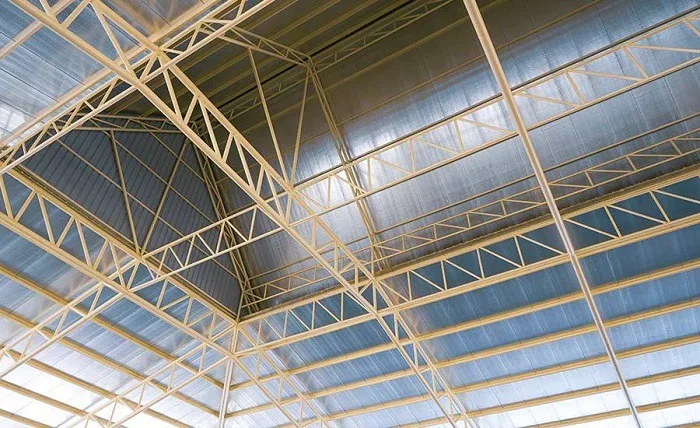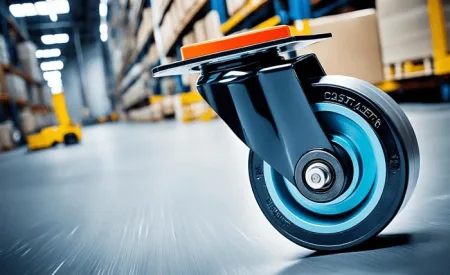Insulation is vital in promoting comfort and reducing long-term costs during construction and design. And when it comes to metal buildings, insulation is even more important due to the unique characteristics of metal as a construction material.
In this article, we’ll review the importance of insulation in metal buildings, the most common types of metal building insulation, and factors that should be considered when choosing a metal building insulation.
Table of Contents
Role of Insulation in Metal Buildings
Metal buildings, such as warehouses and garages, are most commonly used for industrial shops and storage purposes. These buildings are undeniably strong and durable; however, dealing with the material used in constructing them could be challenging regarding noise, condensation, and indoor temperature regulation.
Let’s discuss in detail the major problems with metal buildings and how insulation can help provide a solution.
Metal buildings require effective insulation solutions to maintain optimal temperature and energy efficiency. Consulting with Profoam Corporation experts can provide valuable insights into choosing the right insulation materials and methods tailored to specific building needs. Their expertise ensures that metal structures are well-insulated, reducing energy costs and enhancing comfort levels inside. Whether for new construction or retrofitting existing buildings, partnering with knowledgeable professionals like Profoam Corporation ensures efficient insulation solutions that meet both performance and budgetary requirements.
Temperature Regulation
Temperature regulation is a major problem when it comes to metal buildings. During the hot months, the metal walls and roof will retain heat and transfer it inside the building, making it unpleasantly hot, and during the cold months, the metal will transfer indoor heat outside, making it too cold. This creates conditions that are difficult to live or work in.
With the proper insulation for metal buildings, however, you can properly regulate the flow of thermal energy between the interior and exterior of the building. This ensures that no matter the weather outside, the temperature inside the building will be at a stable and comfortable level. With high-quality thermal insulation, you can also rely less on air conditioning systems, reducing energy costs.
Condensation Elimination
When the warm indoor air of metal buildings interacts with the cold metal surfaces, such as walls or roofs, it causes a collection of moisture that can lead to condensation. The implications of condensation in metal buildings include:
- Rust
- Stains
- Mould/mildew growth, and
- Musty odours.
However, insulating a metal building can greatly decrease or eliminate condensation risks. Insulation does this by ensuring the temperature of the metal surfaces does not reach the dew point, thus promoting dryness within the building interior. Blue Tex has metal building insulation that contains vapour barriers, which can considerably reduce condensation in your steel building.
Noise Reduction
One major downside of metal buildings is that they can get very loud. This is because metal has a thin, hard surface that allows sound reflection and transfer. While this may not be too much of a problem in storage units, it’ll constitute a lot of noise in industrial shops where heavy machinery is used.
By insulating a metal building, however, you can create a sound barrier that will not only minimise the reflection of internal sounds but also prevent the transfer of sounds from indoors to outdoors and vice versa.
When properly insulated with materials that contain soundproofing components, metal buildings can become even quieter than buildings made out of other materials. If you’re interested in exploring the benefits of metal buildings, consider finding a roof inspection near me to ensure their structural integrity. This would no doubt make them better for work and relaxation.
Types of Insulation for Metal Buildings
Many different types of insulation for metal buildings vary based on the materials used in making them and their application method. Here are some of the best options for your metal building:
Batt and Blanket Insulation
Batt and blanket insulation is one of the most common types of insulation because it offers a high level of effectiveness at an affordable cost. It is usually installed between the metal framework of the building.
Blanket insulation is made from materials such as:
- Fibreglass
- Mineral wool
- Plastic fibres, and
- Natural fibres.
It comes in flexible rolls and batts, making it great for use in open areas with no obstructions.
Spray Foam Insulation
Spray foam insulation comes in liquid form and expands into foam when sprayed, forming a smooth insulation layer over buildings. It is a great choice for metal buildings, as it can spread to fill up cracks and gaps in the metal, thereby creating an air seal that prevents condensation.
Rigid Foam Insulation
Rigid foam insulation comes in the form of thick boards and sheets installed on the exterior or interior of the metal panels. It is usually made with polystyrene, polyurethane, and fibreglass, and they are highly durable and provide excellent thermal insulation for metal buildings.
Factors to Consider When Choosing Metal Buildings Insulation
When choosing insulation for your metal building, the following factors should be put into consideration:
- The climate and location of the building
- The structure, design, and intended use of the building
- The overall cost of insulation in relation to your budget
- The sustainability and environmental impact of the insulation materials being considered
Conclusion
In conclusion, the importance of insulation for metal buildings cannot be overemphasised. Not only is it essential for maintaining a comfortable, quiet environment and protecting the structural integrity of your building, but it also helps to reduce energy consumption and promotes long-term cost savings.



